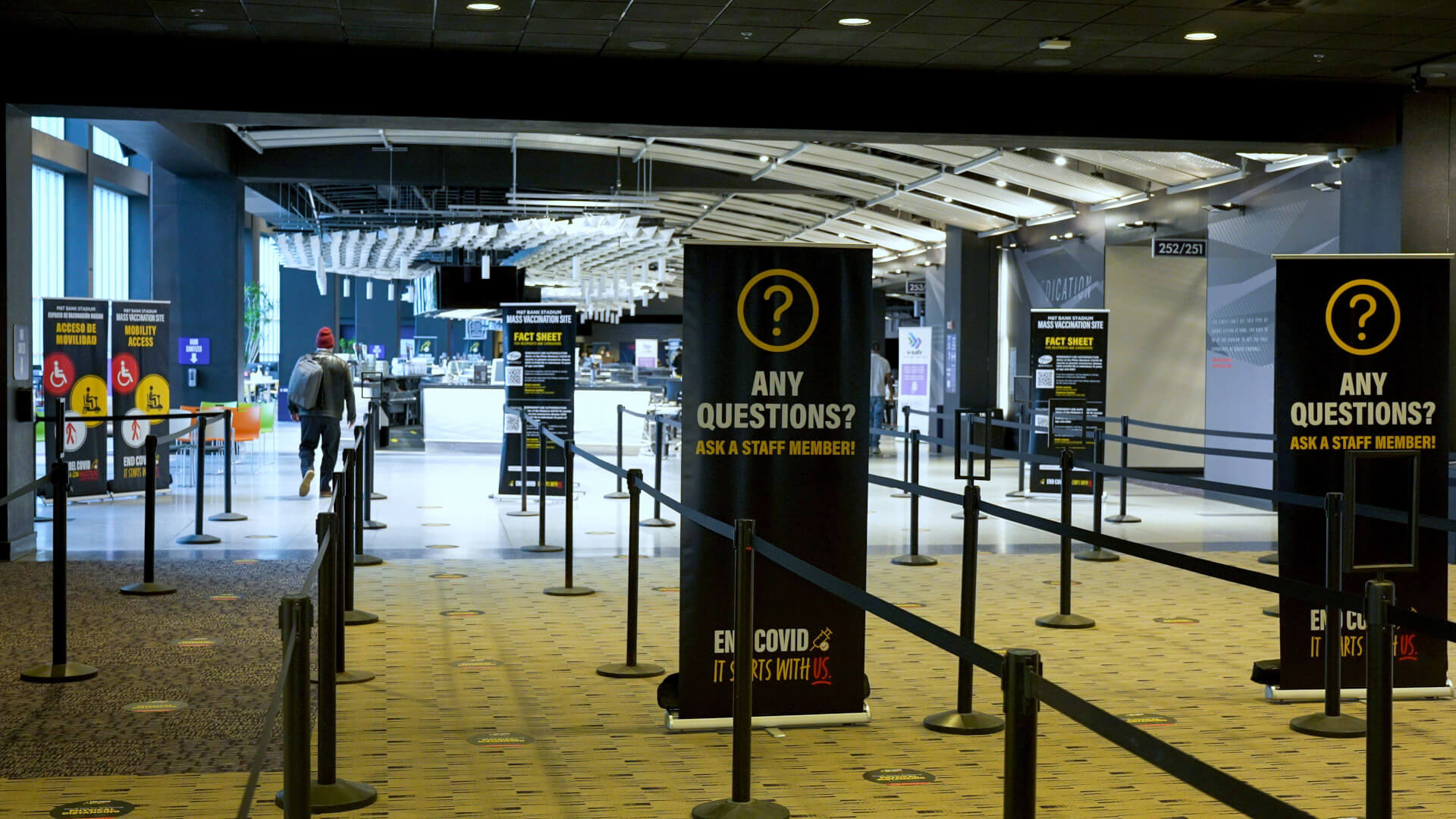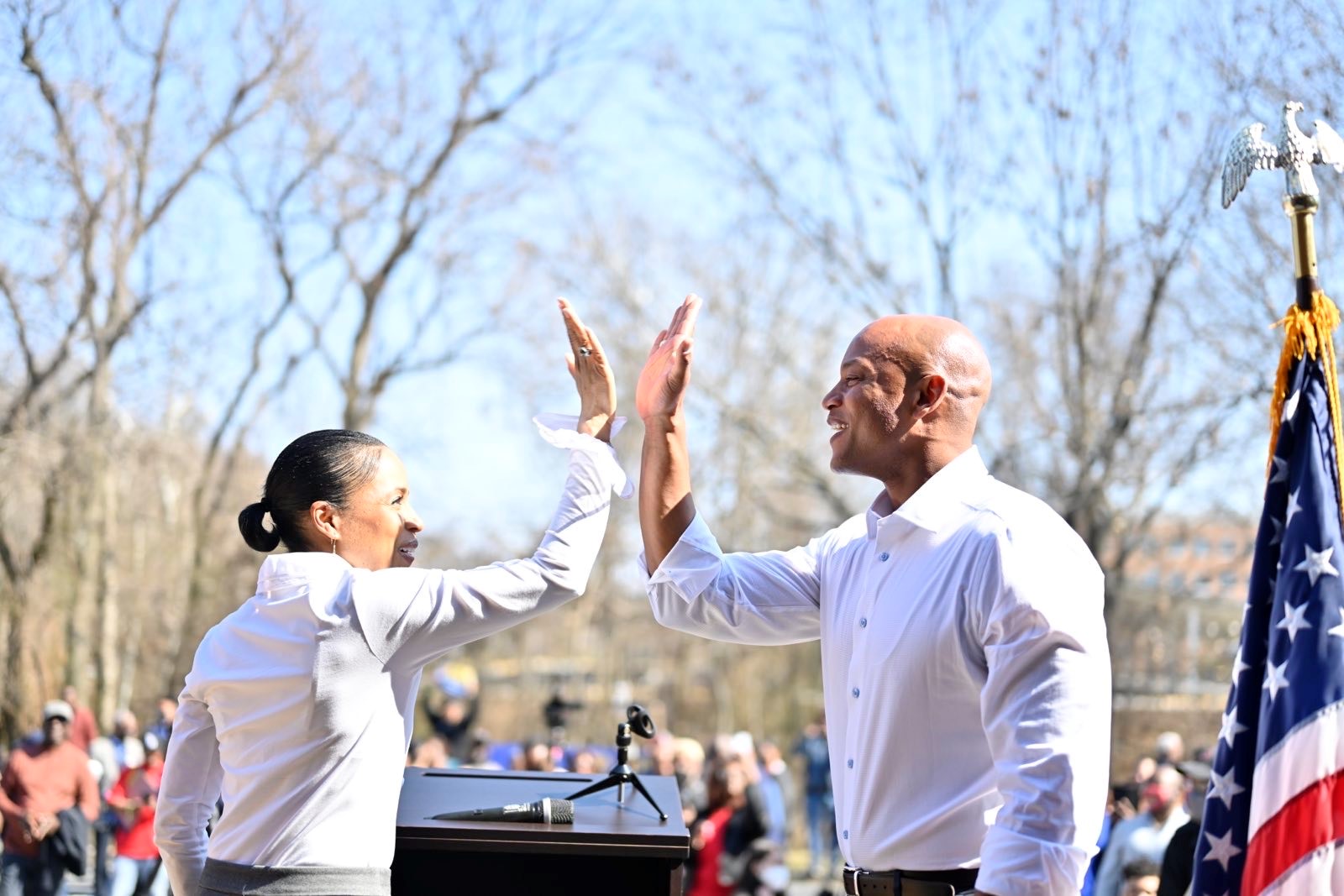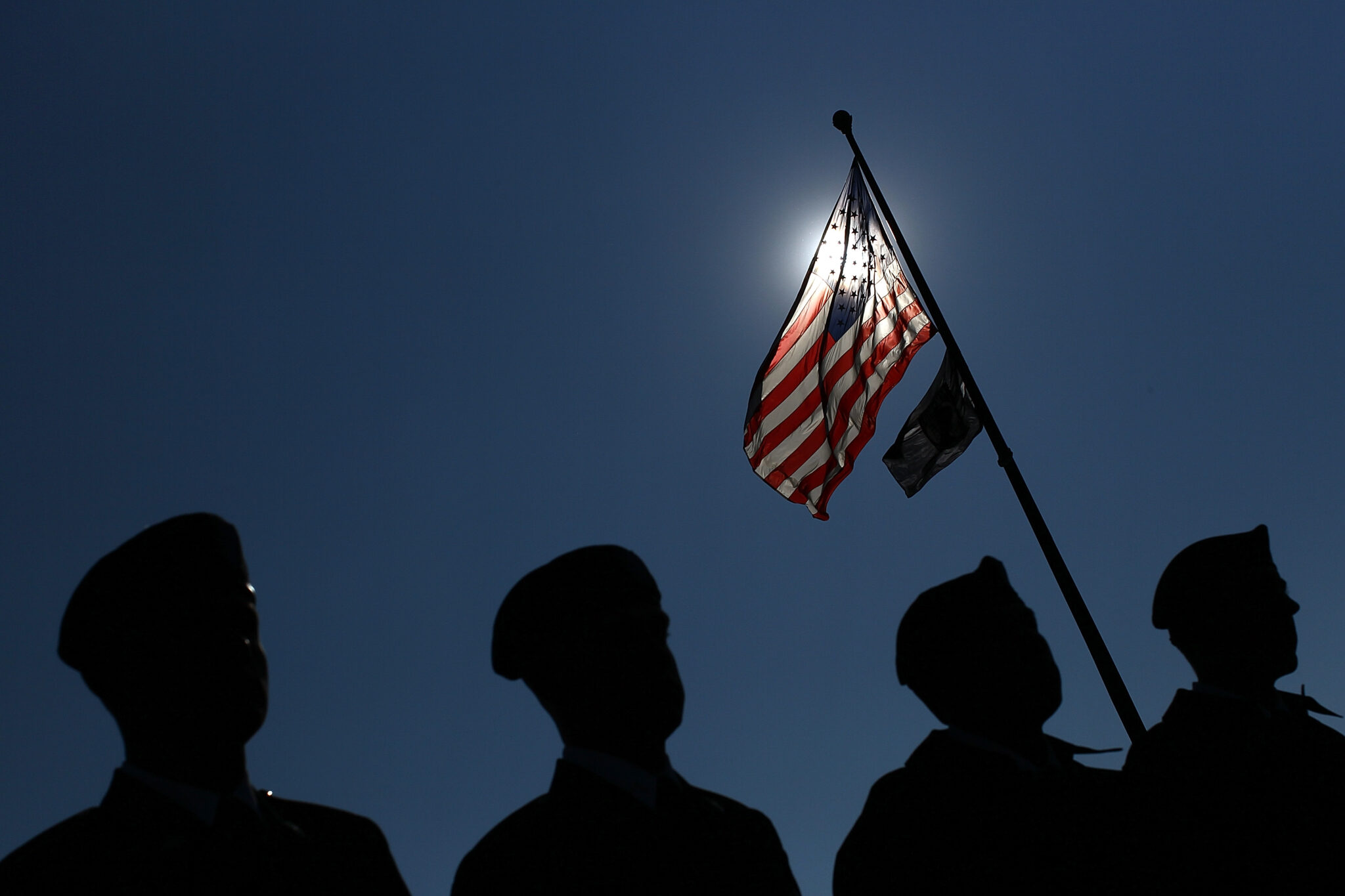Baltimore, Prince George’s Leaders Amp Up Criticism as Hogan Administration Releases More Vaccine Data

The Hogan administration found itself under increasing attack on Wednesday, as local leaders and state legislators from Maryland’s largest majority-Black jurisdictions intensified their expressions of frustration over the state’s COVID-19 vaccination program.
In back-to-back online forums, they accused the state Department of Health of failing to anticipate — and overcome — challenges in distributing the vaccines. As a result, they argued, the government has failed to get doses to the state’s must vulnerable communities.
The officials stressed they wanted not just to air a list of grievances but also to provide constructive ideas.
They were joined in their expressions of outrage by House Speaker Adrienne A. Jones (D-Baltimore County), U.S. Sen. Chris Van Hollen (D), Rep. Anthony G. Brown (D) and various community leaders.
As state and local leaders — all Democrats — launched their attack on the state’s vaccine rollout, the Hogan administration offered its most detailed look at who has received doses so far.
The data show that Baltimore City has received the third most doses, per capita, in the state, behind Kent and Dorchester counties.
Prince George’s County has received the third fewest, ahead of only Anne Arundel and Harford counties.
Communities with higher percentages of Black and Brown people have endured higher infection rates since the pandemic began almost exactly a year ago.
It did not appear that officials from Baltimore and Prince George’s who spoke during an “emergency joint delegation hearing” late Wednesday afternoon were aware of the newly-released data. Nevertheless, they were unsparing and blunt in their criticisms.
Del. Erek Barron (D), the chairman of the Prince George’s House delegation, said communities of color have less access to health care, transportation and computers — and therefore more should have been done to prioritize them in vaccine allocation.
“This all should have been well-anticipated,” he said. “None of this information is new. So why wouldn’t the state take this into account?”
Baltimore Mayor Brandon M. Scott (D) said he asked Maryland health officials to set aside 50% of the doses that get administered at the city’s state-run “mass vaccination” sites — M&T Bank Stadium and the convention center — for Baltimore residents. That request was denied, he said.
“The state has ignored the barriers to access for communities too often left behind,” Scott said. “The [state’s sign-up] system is inaccessible to too many of our vulnerable residents, including older adults and families that have no access to the internet.”
Prince George’s County Executive Angela D. Alsobrooks (D) said it was “unfair and outrageous” that only 3,558 of the roughly 32,000 doses that have been administered at Six Flags America in Largo have gone to residents of Prince George’s.
She said that Prince George’s has 118,000 people on a vaccine waiting list, including 77,000 who are eligible under the state’s current criteria. She requested that Six Flags have vaccination days that are set aside only for the residents of Prince George’s.
Alsobrooks also urged the state to establish two clinics — one at a large church just inside the Capital Beltway and another at the University of Maryland College Park, which is located near one of the hardest-hit ZIP codes in Maryland, 20783, which includes parts of Hyattsville, Adelphi and Langley Park.
Gov. Lawrence J. Hogan Jr. (R) and the director of his Vaccine Equity Task Force, Maryland National Guard Brigadier General Janeen Birckhead, are scheduled to release a new plan to get doses into under-served areas on Thursday.
In an interview Wednesday on WBAL Radio, Lt. Gov. Boyd K. Rutherford (R) said the effort will build on steps the state has already taken — including partnerships with majority-Black churches and the use of “trusted voices” to build confidence in the vaccines.
State numbers revealed
As the leaders spoke, the governor’s office revealed its broadest look yet at how vaccines under the state’s control have been distributed.
Six counties and Baltimore City have received more than 20 doses for every 100 people. Kent County has received by far the most, per capita, at 28.32.
Five counties — Carroll, Baltimore, Prince George’s, Harford and Anne Arundel — have received fewer than 10 doses for every 100 people. (Anne Arundel, the lowest, has received 8.78.)
The statewide county average is 12.13.
The city’s robust haul, 21.08 doses per capita, may blunt some of the criticism that has been lobbed at state leaders. But as local leaders throughout the state have observed, Marylanders are driving long distances to get a vaccine wherever they can find an appointment — often crossing multiple county lines in the process.
Approximately 40% of the doses given out in Baltimore City have gone to city residents.
Alsobrooks said she understood the temptation. “Everybody wants the same thing. We all want our families members to live and to be healthy.”
City declines funds, seeks dose transfer
As a second part of its pushback against criticism, the Hogan administration released a March 3 letter from Dr. Jinlene Chan, acting deputy Health secretary for public health services, to Baltimore City Administrator Christopher J. Shorter.
The letter came in response to the city’s Feb. 19 request to “decline” more than $13 million in federal vaccine-related funding, money that could be used for staffing, PPE, transportation and “other critical needs.”
The letter also makes reference to a request to transfer doses — more than 16,000, according to a Hogan spokesman — from the city’s health department to hospitals and retail pharmacies.
Declining the funding is the city’s right, Chan wrote, but she expressed “the state’s concerns about the potential impact of the loss of this funding…”
In a tart reply to Chan on Wednesday night, Shorter wrote: “As you are aware, Baltimore City declined the State’s pass-through of FEMA reimbursement in order to apply directly to FEMA for 100% reimbursement of our costs, as we have done throughout the pandemic.”
Shorter said the city has developed multiple systems that serve as a “workaround” for the state’s “broken models for distribution and registration” – systems that “are helping us reach key populations much faster.”
“We received state approval for all those redistributions and also requested two weeks ago that all of those reallocations/transfers be posted publicly on the State’s daily vaccine report to accurately reflect the partners supporting efforts to vaccinate City residents,” he added.
‘Some people are more aggressive’
In his WBAL interview Wednesday, Rutherford, the lieutenant governor, said the state can’t discriminate based on where people live, but officials are considering “pop-up sites” as a way of reserving slots “so the local community can get there.”
Asked about the “vaccine hunters” — a group that has mastered the art of scouring the internet for appointments — Rutherford said “some people are more aggressive” at finding the vaccine.
“They’re sitting in front of their computer. They’re looking to see where they can get a vaccine. And if they have transportation, they’re driving to that location,” he said. “We’ve seen people as far away as Montgomery County going to Easton, to go to a Walmart, because they found that there were some slots available.”
He also attempted to shift some responsibility for the equity controversy to local health departments.
“They get an allocation,” the lieutenant governor said. “And they can utilize that allocation in the best way that fits their community. You know, it all starts local. … They can do programs that are reaching the people where they are.”
A chart release by the governor’s office showed that 74.6% of the city’s doses have gone to hospitals and 16% have gone to the Baltimore Department of Health. Only 3% has gone to the mass vaccination sites.
Rutherford said “all the criticism and concern out there will be addressed as we get more vaccines.”
When host Yuripzy Morgan observed that the state’s vaccine rollout is “going well,” Rutherford said he agreed.
Federal lawmakers weigh in
Van Hollen convened a panel of community experts for an online discussion of the state’s “unacceptable” failure to reach people of color.
“The distribution system in Maryland has been opaque. It has not been transparent,” he said. His remarks were delivered before data was released to reporters.
Anita Hawkins, an associate professor in the Morgan State University School of Community Health & Policy, said the keys to reaching under-served communities are availability, accessibility and acceptability.
“It’s very hard to get to communities that are in need when you don’t have equity,” she said. “It’s not hesitancy, it’s about the trustworthiness of the systems themselves.”
Brown, who represents Prince George’s and Anne Arundel, two of the counties at the low-end for per-capita distribution, faulted Hogan for waiting until early March to produce a plan to distribute vaccines to communities hardest hit by infections and deaths.
“Vaccination equity needed to be a priority for Maryland from the very beginning,” the congressman said in a statement. “The fact that only now Governor Hogan is releasing a plan to address disparities in vaccinations, speaks to how disorganized and dysfunctional vaccine administration has been in our state.”
Data analyst Brenda Wintrode contributed to this report.
Click here for our page on COVID-19 and vaccinations.




 Creative Commons Attribution
Creative Commons Attribution